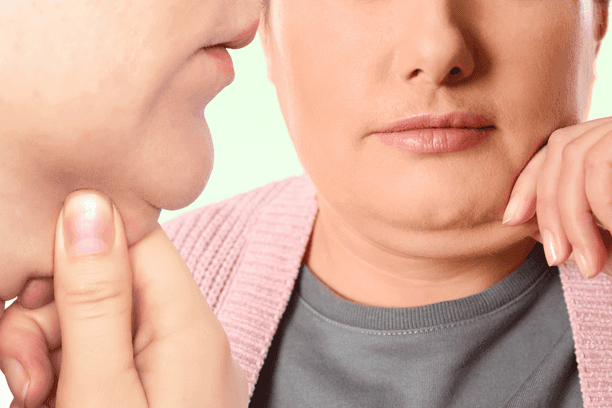Understanding the factors that contribute to face fat is essential for anyone seeking a more defined and sculpted appearance. This article explores the primary causes of facial fat accumulation, including genetic predisposition, dietary habits, hydration levels, hormonal changes, and lifestyle choices. By identifying these factors, you can make informed decisions to effectively target and reduce face fat.
In addition to understanding the causes, we will also discuss practical dietary changes, effective facial exercises, and the vital role of hydration in achieving a slimmer face. These insights aim to empower you with actionable strategies that can enhance your overall appearance and boost your confidence.
In this article you will find:
Understanding the Causes of Face Fat
Face fat can be a common concern for many individuals seeking a more defined and sculpted appearance. Understanding the underlying causes of face fat is crucial for effectively targeting and reducing it. Numerous factors contribute to the accumulation of fat in the facial area, and recognizing these can empower you to make informed lifestyle choices. Below, we explore the primary causes of face fat and how they can be addressed.
Genetic Predisposition
Genetics play a significant role in determining where your body stores fat, including the face. If your family members have a tendency to gain weight in their facial region, you might be more prone to it as well. However, while you may inherit certain traits, lifestyle choices can still make a substantial difference.
Dietary Habits
What you consume directly impacts your body composition, including facial fat. Diets high in processed foods, sugar, and salt can lead to water retention and increased fat accumulation in the face. Foods that are high in calories but low in nutrients can contribute to weight gain overall. To combat this, consider focusing on a balanced diet rich in whole foods, fruits, vegetables, and lean proteins.
Weight Fluctuations
Frequent changes in body weight can lead to the appearance of face fat. When you gain weight, fat tends to accumulate in various parts of the body, including the face. Conversely, rapid weight loss can sometimes result in sagging skin, making facial fat more noticeable. Maintaining a steady and healthy weight is essential for a well-defined facial structure.
Hydration and Water Retention
Dehydration can lead to water retention, which often manifests as puffiness in the face. When the body is not adequately hydrated, it retains water to compensate, leading to a bloated appearance. Ensuring proper hydration not only promotes overall health but can also help in minimizing facial swelling.
Hormonal Changes
Hormonal fluctuations can significantly affect body fat distribution. Conditions like polycystic ovary syndrome (PCOS) or hormonal imbalances during puberty or menopause can lead to increased fat deposits in the face. Understanding these changes and consulting with a healthcare provider can help manage their effects on your appearance.
Age and Skin Elasticity
As we age, our skin loses elasticity, and fat distribution changes, which can make the face appear fuller. This natural aging process can lead to sagging skin and the accumulation of fat. While aging is inevitable, adopting a skincare routine that includes moisturizing and sun protection can help maintain skin health and appearance.
Lifestyle Factors
Several lifestyle choices can contribute to the appearance of face fat:
- Sleep: Lack of sleep can lead to hormonal changes that promote fat storage.
- Stress: High-stress levels can trigger the release of cortisol, leading to weight gain.
- Alcohol Consumption: Excessive alcohol intake can cause dehydration and lead to facial bloating.
By understanding these various causes of face fat, you can take proactive steps to address them. In the following sections, we will explore effective dietary changes and other strategies to help you achieve a slimmer face and boost your confidence naturally.
For further insights into the relationship between diet and facial appearance, consider reading this Healthline article on diet for weight loss.
Effective Dietary Changes for a Slimmer Face
Achieving a slimmer face often begins with making thoughtful dietary changes. The foods you consume can significantly influence facial fat, skin health, and overall appearance. By incorporating specific dietary strategies, you can support your body in reducing face fat while enhancing your confidence and well-being. Here, we explore effective dietary changes that can lead to a slimmer face.
Focus on Whole Foods
One of the most impactful dietary changes you can make is to shift your focus towards whole foods. These include fruits, vegetables, whole grains, lean proteins, and healthy fats. Whole foods are not only more nutritious but also lower in calories compared to processed foods, helping you manage your weight more effectively. Aim to fill your plate with a variety of colorful vegetables and fruits to ensure you’re getting a wide range of nutrients.
Reduce Sodium Intake
High sodium levels can lead to water retention, causing puffiness in the face. Reducing your sodium intake is crucial for a slimmer appearance. Here are some tips to cut back on sodium:
- Limit processed and packaged foods, which often contain high levels of salt.
- Opt for fresh herbs and spices to flavor your meals instead of salt.
- Choose low-sodium versions of canned goods and sauces.
Increase Hydration with Water-Rich Foods
Staying hydrated is essential for maintaining optimal body functions and can also help reduce facial bloating. Incorporating water-rich foods into your diet can aid hydration while providing essential vitamins and minerals. Consider adding the following foods to your meals:
- Watermelon
- Cucumbers
- Celery
- Oranges
- Strawberries
These foods not only help with hydration but also contribute to a feeling of fullness, which can assist in weight management.
Emphasize Healthy Fats
Contrary to the belief that all fats should be avoided, incorporating healthy fats into your diet can be beneficial. Foods rich in omega-3 fatty acids, such as fatty fish (salmon, mackerel), avocados, nuts, and seeds, can help reduce inflammation and improve skin health. These fats also promote satiety, reducing the likelihood of overeating.
Mind Your Portion Sizes
Portion control is essential for maintaining a healthy diet and managing caloric intake. Being mindful of portion sizes can help you avoid consuming excess calories, which can lead to weight gain and facial fat accumulation. Consider using smaller plates, measuring serving sizes, and practicing mindful eating by paying attention to hunger cues.
Avoid Sugary Beverages
Sugary drinks, including sodas, energy drinks, and sweetened teas, are high in calories and can contribute to weight gain. Instead of reaching for these beverages, opt for water, herbal teas, or naturally flavored water with fruits and herbs. This simple switch can make a significant difference in your overall caloric intake and support your goal of a slimmer face.
Consider Balanced Meal Timing
How often and when you eat can also affect facial fat. Aim for balanced meals and snacks throughout the day to maintain stable blood sugar levels and prevent overeating. A regular eating schedule can help regulate your metabolism and promote consistent energy levels.
Making these dietary changes can lead to a noticeable improvement in your facial appearance while supporting overall health. For more insights on healthy eating and its effects on weight management, check out this Nutrition.gov resource on healthy eating.
 Facial Exercises to Tone and Define
Facial Exercises to Tone and Define
Facial exercises, often referred to as facial yoga or facial toning, have gained popularity as a natural method to enhance facial aesthetics. By incorporating targeted movements that engage the muscles in your face, you can promote toning and definition, contributing to a more sculpted appearance. Here, we delve into effective facial exercises that can help you achieve your desired look.
The Benefits of Facial Exercises
Before diving into specific exercises, it’s essential to understand the benefits:
- Tightening and Toning: Regularly engaging facial muscles can help tighten and tone the skin, reducing sagging.
- Improved Circulation: Facial exercises can increase blood flow, promoting healthier skin and a natural glow.
- Reduced Stress: Just like traditional workouts, facial exercises can help relieve tension, leading to a more relaxed expression.
Effective Facial Exercises
Here are some effective exercises to help tone and define your face:
Cheek Lifts
This exercise targets the cheek muscles and can help create a youthful appearance.
- Smile as wide as you can while keeping your lips closed.
- Place your fingers on the apples of your cheeks and gently lift them upwards.
- Hold this position for five seconds, then relax. Repeat 10 times.
Jaw Release
This exercise helps define the jawline and reduce tension in the jaw area.
- Simulate chewing by moving your jaw up and down as if you are chewing gum.
- Inhale deeply through your nose and then exhale while making a “haa” sound.
- Repeat this for 10-15 times, ensuring you maintain a relaxed posture.
Forehead Smoother
This exercise targets the forehead area, helping to reduce the appearance of fine lines.
- Place your fingers on your forehead, spreading them apart gently.
- While applying light pressure, raise your eyebrows as high as possible.
- Hold for five seconds, then relax. Repeat this 10 times.
Neck Stretch
This exercise can help define the jawline and reduce double chin appearance.
- Sit or stand up straight, tilting your head back to look at the ceiling.
- Push your lower lip out and hold for five seconds.
- Return to the starting position and repeat 10 times.
Consistency is Key
For optimal results, consistency is crucial. Aim to perform these exercises at least five times a week. Just like any fitness routine, the effects of facial exercises build over time, leading to enhanced toning and definition.
Incorporating Facial Exercises into Your Routine
To make facial exercises a part of your daily routine, consider:
- Setting aside a few minutes each morning or evening for your exercises.
- Combining facial exercises with your skincare routine for added benefits.
- Recording your progress to stay motivated and track changes in your facial appearance.
In addition to these exercises, maintaining a healthy diet and staying hydrated will further enhance the effectiveness of your facial toning efforts. For more information on the benefits of facial exercises, you can explore this Healthline article on facial exercises.
 The Role of Hydration in Reducing Face Fat
The Role of Hydration in Reducing Face Fat
Hydration is often overlooked in discussions about weight management and aesthetics, yet it plays a pivotal role in reducing face fat and enhancing overall appearance. The connection between hydration and facial fat reduction is rooted in the body’s physiological processes, which are influenced by the amount of water you consume. Here, we explore how proper hydration can help you achieve a slimmer face and maintain a youthful glow.
Understanding Water Retention
One of the main reasons for a puffy face is water retention, which can be exacerbated by dehydration. When your body is not adequately hydrated, it tends to hold onto water as a survival mechanism. This can lead to a bloated appearance, particularly in the facial area. By staying well-hydrated, you can help your body maintain a healthy fluid balance, reducing the likelihood of puffiness.
How Hydration Affects Skin Elasticity
Hydration also plays a critical role in maintaining skin elasticity. Well-hydrated skin appears plumper and more youthful, which can contribute to a more defined facial structure. Here are some benefits of hydration for skin health:
- Improved Texture: Adequate hydration helps keep your skin smooth and supple, minimizing the appearance of fine lines and wrinkles.
- Enhanced Circulation: Hydration supports blood flow, which is essential for delivering nutrients to skin cells and promoting a healthy complexion.
- Detoxification: Drinking enough water aids the body’s natural detox processes, helping to eliminate toxins that can affect skin health.
Hydration and Metabolism
Proper hydration is essential for optimal metabolic function. When you are adequately hydrated, your body can efficiently process nutrients and burn calories. A well-functioning metabolism aids in weight management and fat loss, which can help reduce facial fat. Studies have shown that even mild dehydration can slow down metabolism, making it harder to achieve your weight loss goals.
Practical Tips for Staying Hydrated
To reap the benefits of hydration, consider these practical tips:
- Drink Water Regularly: Aim to drink at least eight 8-ounce glasses of water a day. Adjust this based on your activity level and climate.
- Infuse Your Water: If plain water doesn’t appeal to you, try infusing it with fruits, herbs, or vegetables for added flavor and nutrients.
- Monitor Your Urine Color: A simple way to gauge hydration is to check the color of your urine. Light yellow indicates proper hydration, while dark yellow suggests you need more fluids.
- Include Water-Rich Foods: Incorporate foods with high water content into your diet, such as cucumbers, watermelon, oranges, and lettuce.
Hydration and Lifestyle
Staying hydrated is not just about drinking water; it’s about integrating good hydration practices into your lifestyle. Consider the following:
- Set Reminders: Use apps or alarms to remind you to drink water throughout the day.
- Carry a Water Bottle: Keep a reusable water bottle with you to make it easier to drink water on the go.
- Limit Dehydrating Beverages: Reduce the intake of caffeinated and alcoholic beverages, which can contribute to dehydration.
In summary, hydration is a crucial element in the pursuit of a slimmer face and overall health. By prioritizing water intake and adopting hydration-friendly habits, you can significantly enhance your facial appearance. For more information on the importance of hydration and its effects on health, check out this CDC resource on hydration. Understanding the causes of face fat is crucial for those looking to achieve a more sculpted appearance. Key factors include genetic predisposition, dietary habits, weight fluctuations, hydration levels, hormonal changes, and age-related skin elasticity. Lifestyle choices such as sleep quality, stress management, and alcohol consumption also play significant roles in facial fat accumulation.
To reduce face fat effectively, focus on dietary changes like prioritizing whole foods, reducing sodium intake, and increasing hydration through water-rich foods. Incorporating facial exercises can further tone and define the facial structure. Maintaining proper hydration is essential, as it helps minimize water retention and supports skin elasticity. Regularly drinking water, monitoring hydration levels, and adopting a balanced meal schedule can contribute to a slimmer face and overall health.


 Facial Exercises to Tone and Define
Facial Exercises to Tone and Define The Role of Hydration in Reducing Face Fat
The Role of Hydration in Reducing Face Fat

